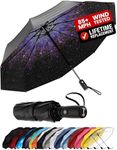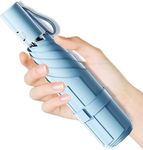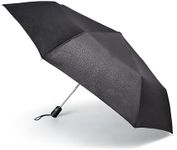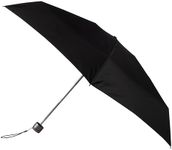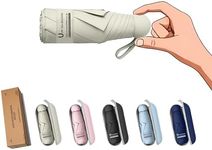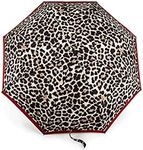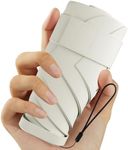Buying Guide for the Best Mini Umbrellas
Choosing the right mini-umbrella involves considering factors that will ensure it meets your needs for portability, durability, and protection against the elements. Mini-umbrellas are designed to be compact and easy to carry, making them ideal for travel or everyday use when you need a lightweight option. When selecting a mini-umbrella, focus on the specifications that will affect its performance and convenience.SizeSize refers to both the length of the umbrella when closed and the diameter when open. This is important because it affects how easily the umbrella can be carried and stored, as well as how much coverage it provides when in use. Mini-umbrellas typically range from very compact models that fit in a small bag to slightly larger ones that offer more coverage. If you need something that fits in a purse or small backpack, opt for a smaller size. If coverage is more important, choose a slightly larger diameter when open.
WeightWeight is crucial for portability, especially if you plan to carry the umbrella for extended periods. A lighter umbrella is easier to carry and less cumbersome, making it ideal for travel or daily commuting. Mini-umbrellas generally weigh less than regular umbrellas, but there can be variations. If you prioritize ease of carrying, look for the lightest options available. However, keep in mind that lighter umbrellas may sometimes compromise on durability.
MaterialThe material of the umbrella affects its durability and resistance to wind and rain. Common materials include polyester, nylon, and pongee for the canopy, and aluminum or fiberglass for the frame. Polyester and nylon are lightweight and water-resistant, while pongee offers a softer feel. Aluminum frames are light but can be less durable than fiberglass, which is more flexible and wind-resistant. Choose materials based on your need for durability versus weight; if you expect frequent use in windy conditions, prioritize sturdier materials.
Opening MechanismThe opening mechanism determines how easily the umbrella can be deployed. Options include manual, automatic, and semi-automatic mechanisms. Manual umbrellas require you to push the canopy open, which can be more reliable but less convenient. Automatic umbrellas open with the push of a button, offering quick deployment, which is useful in sudden rain. Semi-automatic combines features of both. Consider how often you'll need to open the umbrella quickly and choose accordingly.
Wind ResistanceWind resistance is a measure of how well the umbrella can withstand strong gusts without flipping inside out. This is important for maintaining protection during windy conditions. Mini-umbrellas may have reinforced frames or vented canopies to improve wind resistance. If you live in or travel to areas with frequent windy weather, look for umbrellas specifically designed to handle such conditions, often labeled as windproof or stormproof.
CompactnessCompactness refers to how small the umbrella can be folded down for storage. This is a key feature for mini-umbrellas, as it determines how easily they can fit into bags or pockets. The more compact an umbrella is, the easier it is to carry around without taking up much space. If you need an umbrella that you can always have on hand without it being a burden, prioritize models that offer the smallest folded size.
